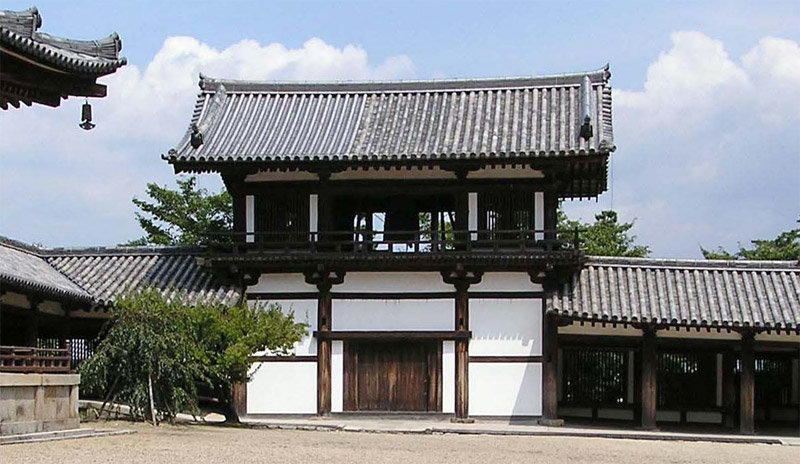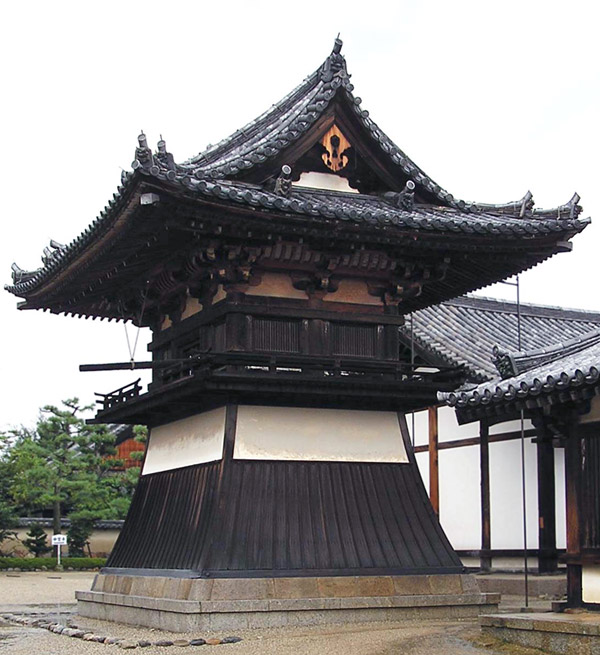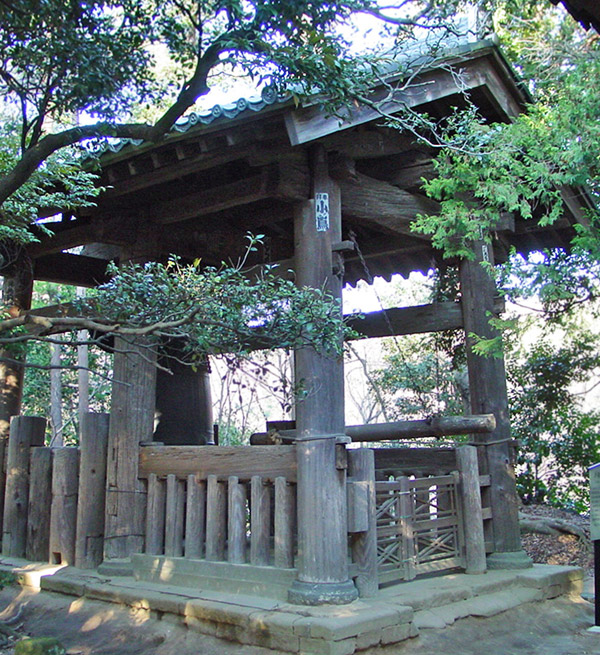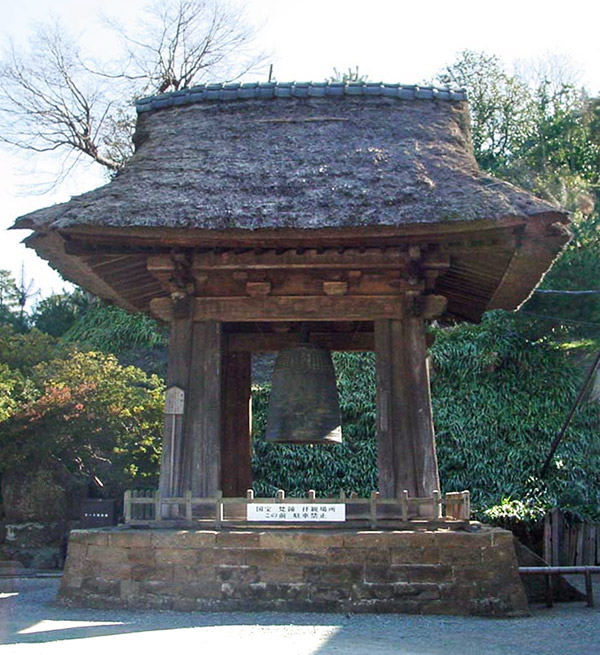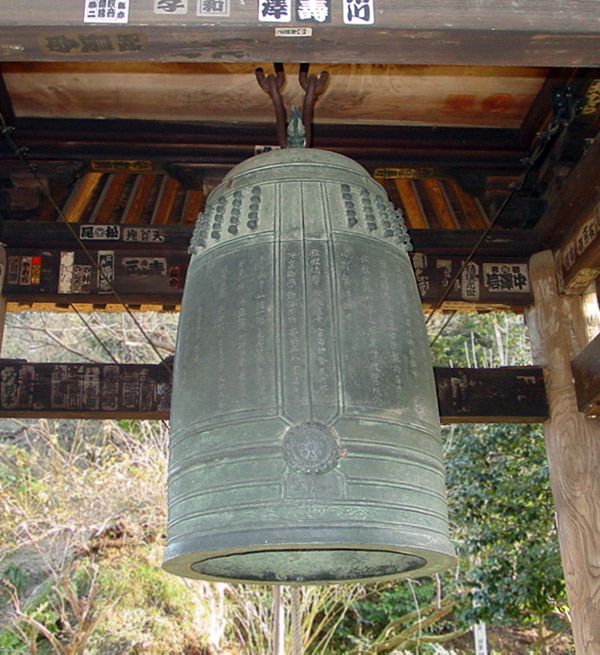| Also
called shuurou, kanetsukidou àË°. Lit. bell hitting hall, tsuriganedou
Þà°. Belfry. A building in which a bell bonshou à is hung. The
early belfries in the Nara period were double-storied 3 x 2 bay
structures and the bell was suspended in the upper story. The building was
like those used as sutra repositories *kyouzou
o and similar to the ancient drum towers *korou
ÛO sometimes used for storing sutras at Buddhist temples. Usually two such
buildings were positioned in front to the left and right of the lecture
hall *koudou u°. Example:
Houryuuji Sai-in Shourou @²¼@àO (late 10c - early 11c), which was
identical to a sutra repository constructed in the Nara period. Toward the
late Heian period, a new style of belfry was built and called
*hakamagoshi Ñ,
2-storied with an enclosed substructure curving out at the base to create
a trapezoidal-like shape with a single narrow door on one side. The bell
was suspended in the upper part which was, in some examples, quite open
in contrast to the usual enclosed by windows filled with vertical lath *renjimado
Aq, Example: Houryuuji Touin @²@ (Kamakura period), the oldest extant belfry
in the hakamagoshi style. At the beginning of the 13c, a new type
of belfry was constructed at Toudaiji å in Nara, under the direction
of the Buddhist priest Yousai h¼ (1141-1215). The building was completely
open and the stout pillars, were reinforced by studs, were placed corner
and all other structural members were visible. The huge bell was hung from
the central transverse beam and the striking pole was within reach the ground
floor at the single-storied building. This open type belfry, usually with
four main pillars *hashira
stabilized by penetrating tie beams *nuki
Ñ, became very popular. Many of the corner pillars were set with an inward
incline *uchikorobi
à]. Example: Rinnouji Jigendou Shourou Ö¤á°àO (1642), Tochigi prefecture.
After the advent of the Heian period, the location of the shourou
was not strictly prescribed. Roof types were generally gabled *kirizuma-zukuri
ØÈ¢ or hip-and-gable *irimoya-zukuri
üꮢ. |

